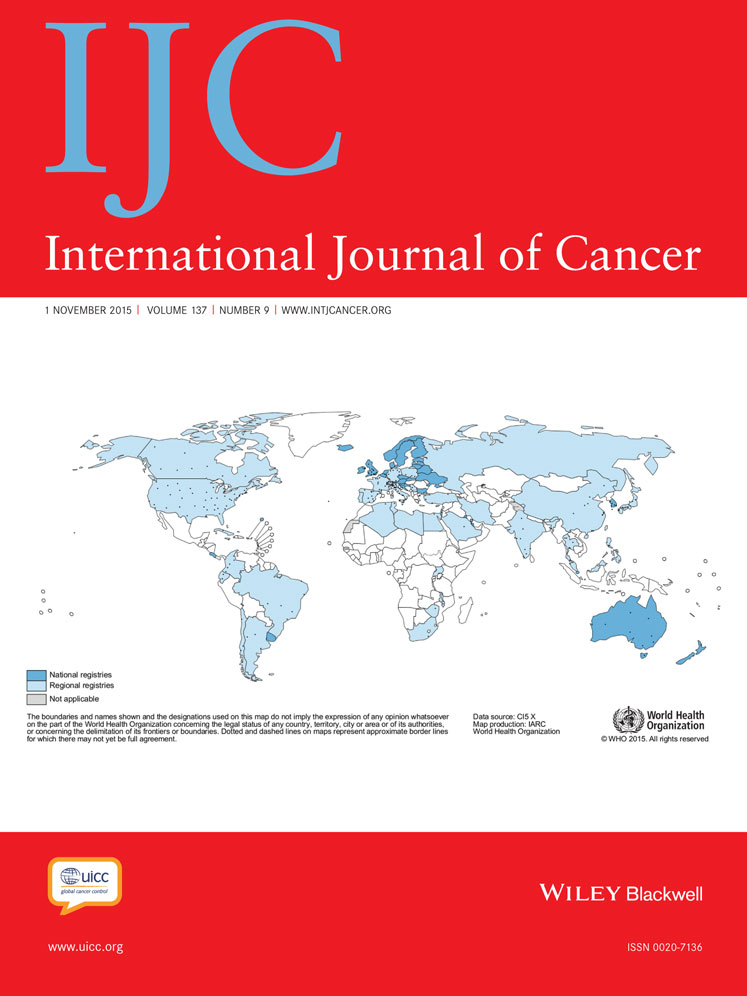Comparing sensitivity and specificity of screening mammography in the United States and Denmark
Abstract
Delivery of screening mammography differs substantially between the United States (US) and Denmark. We evaluated whether there are differences in screening sensitivity and specificity. We included screens from women screened at age 50–69 years during 1996–2008/2009 in the US Breast Cancer Surveillance Consortium (BCSC) (n = 2,872,791), and from two population-based mammography screening programs in Denmark (Copenhagen, n = 148,156 and Funen, n = 275,553). Women were followed-up for 1 year. For initial screens, recall rate was significantly higher in BCSC (17.6%) than in Copenhagen (4.3%) and Funen (3.1%). Sensitivity was fairly similar in BCSC (91.8%) and Copenhagen (90.5%) and Funen (92.5%). At subsequent screens, recall rates were 8.8%, 1.8% and 1.4% in BCSC, Copenhagen and Funen, respectively. The BCSC sensitivity (82.3%) was lower compared with that in Copenhagen (88.9%) and Funen (86.9%), but when stratified by time since last screen, the sensitivity was similar. For both initial and subsequent screenings, the specificity of screening in BCSC (83.2% and 91.6%) was significantly lower than that in Copenhagen (96.6% and 98.8%) and Funen (97.9% and 99.2%). By taking time since last screen into account, it was found that American and Danish women had the same probability of having their asymptomatic cancers detected at screening. However, the majority of women free of asymptomatic cancers experienced more harms in terms of false-positive findings in the US than in Denmark.
Abstract
What's new?
International comparisons of cancer-screening programs can identify methods for improving screening strategies. In this study, the authors compared breast-cancer screening programs in Denmark and the United States (US). The study found that recall rates in the US were about four times as high as that in Denmark. Although both programs detected a similar percentage of asymptomatic cancers, women in the US were far more likely to have received a false-positive test result, leading to increased patient anxiety and higher costs.




